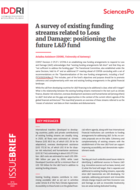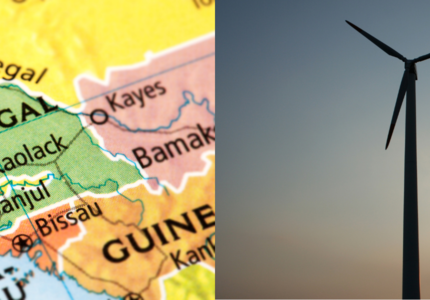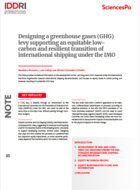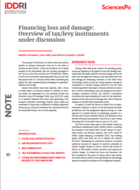Presentation
The operationalization of new funding arrangements for assisting developing countries that are particularly vulnerable to respond to loss and damage is underway within the framework of the Paris Climate Agreement. In this context, key questions have to be addressed regarding the allocation of funds and recipients and how vulnerability to climate change will be factored into decision-making processes. This Study analyses evolutions in the scientific, legal, and financial domains on defining and characterizing vulnerability, in order to better understand implications for Parties to the United Nations Framework Convention on Climate Change and find potential avenues forward around this polarized issue.
Key Messages
- The IPCC has evolved in characterizing vulnerability as biophysical/geographic to focusing on socio-economic drivers (institutional, economic, cultural), with a shift towards a “risk framing” that also recognizes structural vulnerabilities (as independent of climate change, exogenous). It is understood that vulnerability differs across communities and contexts, that it is changing and that cross comparisons risk losing important contextual place-based specificities.
- Officially established in 1992, the UNFCCC lists small island developing States and a range of biophysical characteristics prone to climate vulnerability as “particularly vulnerable”; and the Bali Action Plan (2007) highlights “especially” Least Developed Countries (LDCs), Small Island Developing States (SIDS), and African countries (i.e. 91 countries out of the 134 developing countries members of the Group of 77 and China).
- Multilateral funding mechanisms for adaptation (e.g. Adaptation Fund, Least Developed Countries Fund and Special Climate Change Fund) target developing countries, and use vulnerability as a criteria for eligibility and allocation of funding. Given that no metric is available for vulnerability, economic (developing country income status), physical and geographic features (low-lying coastal areas, SIDS) and hazards (droughts, desertification) have important weight on how funding is prioritized on a project basis.
- Components of vulnerability (income indicators, biophysical features and geographies) correspond to Party groups under the UNFCCC such as LDCs, SIDS and Africa regional group. However, strict interpretations of vulnerability under the Convention limits consideration of evolving countries (i.e. those recommended for graduation to higher income status) and underrepresented regions (South East Asia, South and Central America) that are vulnerable to climate change and Loss and Damage.
- Current international climate policy and multilateral agenda items on Loss and Damage, climate finance reforms (Paris Summit, Bridgetown Agenda, World Bank roadmap) suggest there is room for transforming adaptation finance, and vulnerability has a space in these discussions. To address systemic and structural vulnerabilities, some consideration of the multi-dimensional vulnerability index developed by the UN and endorsed by the Association of Small Island Developing States could help understand evolving countries’ needs, including facing limits beyond adaptation.







